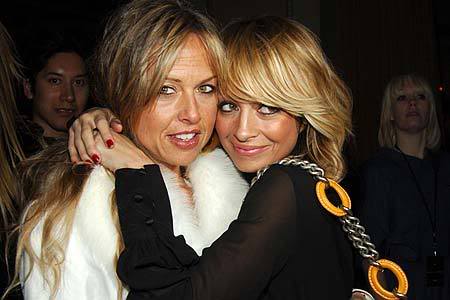Reality stars happened for numerous reasons, most notably because TV and print, destabilized by the Internet, needed insta-celebs to provide cheap content–actual stars were too expensive in the new economic reality–so dysfunction was commodified, and the modern version of the circus freak show was popularized. They’re pretty much walking products, all the Housewives and Bachelors, desperately trying to sell themselves in a market where the middle has disappeared and the bottom is the best most can hope for.
In 2007, Lynn Hirschberg of the New York Times Magazine penned “Being Rachel Zoe,” a profile of the image maker at an inflection point in the culture, when faux celebs were becoming the real thing, when the sideshow moved to the center ring. An excerpt:
As always, Zoe (pronounced ZOH) was dressed for the designer she was viewing. She was wearing a bright pink nubby wool Chanel jacket, black pants and her usual five-inch platform open-toed shoes. All the Zoe trademarks were in place: she was very tan; her long blond hair was carefully styled to look carefree; there were ropes of gold chains around her neck and stacks of diamond bangles on her wrists; and enormous (Chanel) sunglasses nearly obscured her face. Even wearing high heels, she is short and stick-thin, but Zoe, who is 36, does not seem fragile. The masses of jewelry, the outsize sunglasses, the whole noisy, ’70s-inspired look add up to a hectic, ostentatious, theatrical sort of glamour.
It’s the look she has duplicated on her clients, making the so-called Zoe-bots paparazzi favorites, as well as walking advertisements for a host of top designers. A cross-pollinator of the worlds of Hollywood celebrities, high fashion and tabloid magazines, Zoe has become a powerful image broker, a conduit to the ever-more lucrative intersection of commerce, style and fame. Early in her career, in 1996, she worked as a stylist at YM magazine, dressing such teenage pop stars as Britney Spears and Jessica Simpson, girls who were young enough to be molded and popular enough to be influential. Around the same time, magazines like Us Weekly began inventing their own cadre of celebrities, like Paris Hiltonand Nicole Richie. They had no discernible accomplishments or talent, but they did seem to go out a lot, and they thrived under the flash of the paparazzi. Magazines like Us constructed provocative narratives around them — their romantic woes, their drug problems — and Zoe, who began working with Richie in 2003 when she was viewed only as Hilton’s plump sidekick, saw an opportunity. “Nicole is now what people refer to as the big thing that happened,” Zoe told me in Paris. “Everything went from nowhere to everywhere. Nicole was about creating a look. Because of her fashion sense, which was really my fashion sense, she became famous. It was a huge moment: Nicole became a style icon without being a star.”
And then Nicole became a star, too. Because of circumstances that remain murky, Nicole and Rachel no longer speak. But the relationship made their careers. Zoe began working with Lindsay Lohan, Kate Beckinsale and other tabloid-ready stars eager for a new fashion identity. Now she has 20 clients, each of whom reportedly pays her more than $6,000 a day to dress them for events, big and small. Some pay only for premieres and award shows; some also retain Zoe to provide clothes for their daily lives. The financial scope of her business also includes incentives in the form of money and/or clothes, accessories or jewels, offered by designers eager to dress a particular Zoe client for a particular event. “Around three years ago, everything began to change,” Zoe said as she ran through puddles toward the entrance of the Chanel show. “The nature of what, or who, is a celebrity has expanded. We aren’t saving lives here, but we are creating images, and images create opportunities in a lot of areas.”•
Tags: Lynn Hirschberg, Rachel Zoe

